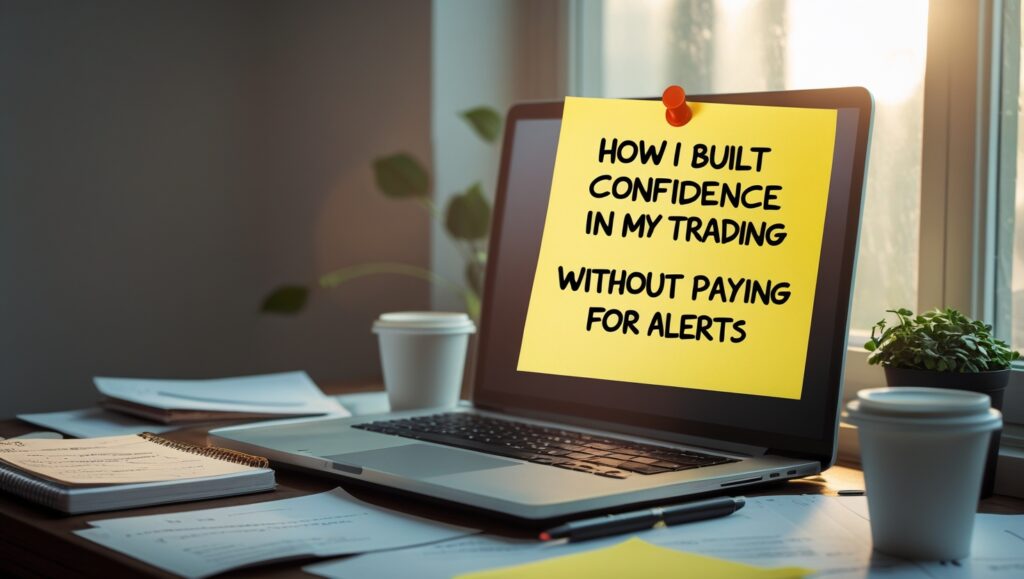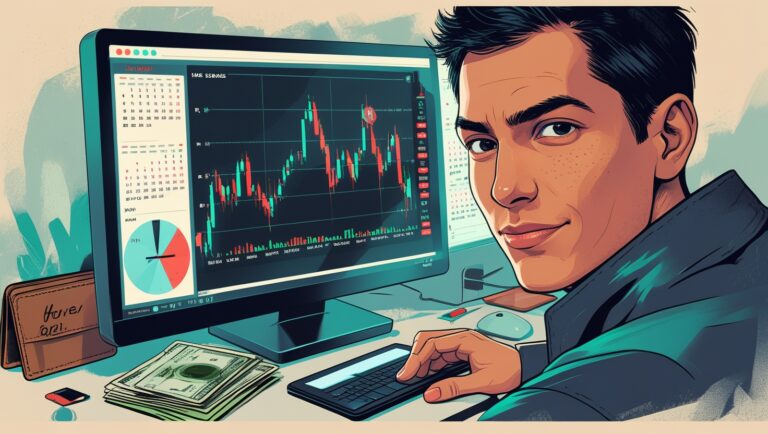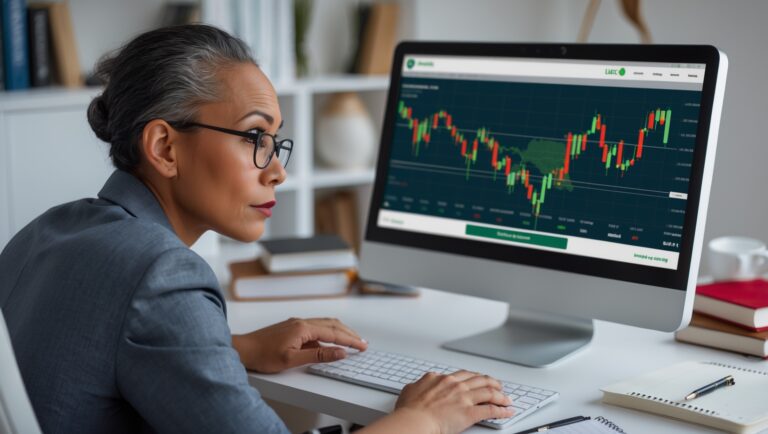How I Built Confidence in My Trading Without Paying for Alerts
How I Built Confidence in My Trading Without Paying for Alerts
When I first started trading, I was convinced I needed alerts from “experts” to make it. I followed every signal I could find, jumped into trades others were calling, and hoped for the best. But over time, I realized something important—I wasn’t learning anything. I didn’t understand the moves, the timing, or the setups. I was just reacting.
I was missing the confidence to make decisions on my own.

Table of Contents
The Shift That Changed Everything
One day, after another losing week, I decided to stop relying on alerts altogether. I told myself: if I was going to make it, I had to do it by learning to read the market myself. That’s when things started to shift.
I began focusing on price action, volume, and clean chart patterns. I didn’t need 10 indicators or 5 confirmation tools. I needed simplicity—and trust in my process.
Building Confidence From Preparation
What gave me the most confidence wasn’t a perfect trade. It was having a plan before the market opened. Every morning, I created a small watchlist of 4–6 stocks. I looked for stocks with volume, momentum, or a catalyst—and I wrote down what I’d look for to enter.
This planning became my daily trading routine, and it helped me stick to my setups and ignore the noise.
I Trade Less—But Win More
Once I had my own system, I stopped trading everything. I only took trades that made sense to me. That meant fewer trades, less stress, and better results. I finally realized that discipline beats activity.
Even though I was trading less, I was making more consistent profits—because I trusted my entries.
Learning From My Own Results
Instead of watching someone else win or lose, I started reviewing my own trades. I tracked my entries, exits, and emotional state during each trade. Over time, this helped me refine my edge and recognize what worked.
That self-review became the real teacher—not alerts, not a guru.
My Ebook: The System That Finally Worked
After gaining consistency, I put together everything I learned into one simple method. It’s the system I use to trade today, and it’s how I pay my bills every month without guessing or stressing.
If you’re serious about building confidence and want to stop chasing others’ trades, my ebook can help you. I show you how I:
- Build a watchlist before the bell
- Trade without indicators
- Spot clean setups
- Manage trades without stress
Final Thoughts
Confidence doesn’t come from alerts—it comes from clarity. When you know your edge, and you follow it consistently, you stop second-guessing and start executing.
If I can do it without a fancy course or paid alert system, so can you. Start small, keep it simple, and trust your process. That’s how real confidence is built.
One of the biggest mindset shifts I had was realizing that confidence comes from repetition, not luck. I didn’t need more trades; I needed to keep showing up and refining the same routine until it became second nature. The more I stuck to my plan, the easier it became to trust myself.
I also learned to stop chasing every green candle. I used to jump into trades just because a stock was moving fast. But fast doesn’t always mean profitable. By waiting for my specific setup, I avoided the emotional rollercoaster that comes with FOMO-driven decisions.
Another key step was removing noise. I unfollowed most trading accounts that constantly posted alerts, profits, or hype. Instead, I focused on my own charts. That silence helped me hear my own strategy louder.
I built a morning checklist. Before every trade, I ask myself the same questions: What’s the catalyst? Is volume there? Does this match my setup? What’s my risk? That checklist gave me structure—and structure breeds confidence.
I also started journaling my trades every week. I wrote down what worked, what didn’t, and how I felt during the trade. Over time, I could see patterns in my wins and my mistakes. That feedback was priceless.
When you stop relying on someone else to tell you what to trade, you start owning the process. It’s uncomfortable at first, but that’s where growth begins. You stop reacting and start leading your own strategy.
Discipline replaced doubt. Once I had a system I trusted, I didn’t care what anyone else was doing. I stopped hopping from one strategy to another. I focused on refining my way, and every small win reinforced my confidence.
I realized that trading isn’t about being right every time—it’s about being prepared. I was more confident knowing my stop loss was in place, my size was right, and I wasn’t chasing anything I didn’t understand.
I don’t need a thousand tools. I use price action, volume, and a few key levels. That’s it. The simplicity keeps my head clear and lets me act fast when I see a setup that fits.
Looking back, I’m grateful I broke free from alerts. It forced me to grow. It made me dig deeper, test ideas, and build something real. Now I know exactly why I’m in a trade—and when to get out.
That’s the kind of confidence no one can sell you. You earn it. And once you have it, it changes everything.
If you’re still chasing alerts, I challenge you to take a step back. Try building your own plan. Test it. Refine it. And if you want a shortcut to what worked for me, don’t forget — my ebook walks you through the exact system I use every week:
👉 Download the ebook here
A big part of my growth came from failing forward. I made bad trades. I doubted myself. But instead of quitting, I asked what I could learn from each loss. Every red trade became a lesson, not a defeat. That shift in mindset helped me stop fearing mistakes and start using them to get better.
I also found that less is more. I used to think I needed to trade all day or follow 10+ stocks to find the “right” one. But now, I focus on just a few names I know well. Familiarity builds confidence. I don’t need to guess how a stock moves—I already understand its personality.
Confidence doesn’t mean taking more trades—it means knowing when not to trade. I’ve had days where I didn’t take a single setup, and that used to frustrate me. Now I see it as a win. No trade is better than a bad trade. That patience has saved me a lot of money and stress.
And finally, I remind myself often: I’m not here to be perfect. I’m here to be consistent. Every trade doesn’t need to be a home run. Small, steady gains add up—and when you trust your system, the confidence to keep going comes naturally.

Stay ahead in the stock market! Subscribe to our newsletter and receive exclusive stock flow reports, trading insights, and actionable tips directly in your inbox. Join thousands of traders who get our updates first.







